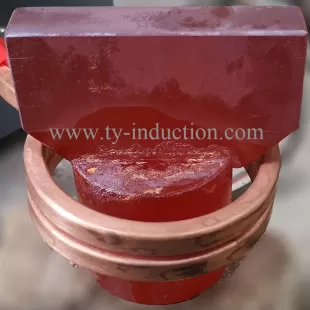Induction brazing has become a pivotal technology in various industries, offering a cleaner, more precise, and faster alternative to traditional brazing methods. Let's delve into the intricacies of induction brazing equipment, exploring how it works and its manifold applications.

In the intricate world of manufacturing, the need for efficient and precise joining methods is paramount. Induction brazing, a process that utilizes electromagnetic induction to heat and join metals, has emerged as a game-changer. Industries ranging from automotive to electronics have embraced this technology for its speed, accuracy, and safety.
At its core, induction brazing involves using electromagnetic fields to induce heat in the workpiece, melting a filler material and creating a strong bond between two metals. This method stands out from traditional brazing techniques due to its ability to focus heat precisely, minimizing thermal distortion and maximizing efficiency.
Understanding the components of induction brazing equipment is crucial to comprehend its functionality. The primary components include a power supply unit, an induction coil, a work coil, and a cooling system. The power supply generates high-frequency electrical currents, while the coils play a crucial role in directing and concentrating the induced heat onto the workpiece.
The magic unfolds through the induction heating process. As alternating current flows through the induction coil, it creates a rapidly changing magnetic field around the work coil and, consequently, the workpiece. The magnetic field induces currents in the workpiece, leading to resistive heating and ultimately causing the brazing material to melt and bond the metals together.
The benefits are as enticing as the process itself. Induction brazing boasts faster heating times, precise control over temperature, and a cleaner, safer working environment. Industries adopting this method witness enhanced productivity and reduced production costs.
The versatility of induction brazing finds expression in various sectors. In the automotive industry, it aids in joining components with precision, ensuring structural integrity. Electronics manufacturing benefits from the precise control, while the aerospace sector appreciates the speed and reliability of the process.
Selecting suitable induction brazing equipment is crucial for optimal results. Factors such as material compatibility, power requirements, and the desired production rate must be considered. The right equipment ensures efficiency and cost-effectiveness.
Can it handle different materials?
Induction brazing is versatile and can handle various metals, providing the right filler material is chosen.
What maintenance is required?
Regular checks on coils and power supply are necessary, but induction brazing equipment generally requires minimal maintenance.
Is it energy-efficient?
Compared to traditional methods, induction brazing is more energy-efficient, as the heat is generated directly within the workpiece.
No technology is without challenges. Addressing common issues, such as uneven heating or material compatibility, requires a nuanced approach. Regular maintenance and adherence to best practices can resolve most concerns.
As technology evolves, so does induction brazing. Innovations such as improved coil designs, smarter control systems, and enhanced power supplies are on the horizon. These advancements promise even greater efficiency and cost-effectiveness.
Real-world applications showcase the success of induction brazing. Companies adopting this technology experience improved product quality, reduced production times, and ultimately, increased profitability.
Beyond its technical merits, induction brazing also presents an environmentally friendly alternative. The reduction in energy consumption and the absence of harmful by-products contribute to a greener manufacturing process.
In conclusion, understanding how induction brazing equipment works unveils a world of possibilities for industries seeking efficient and precise metal joining methods. From its basic principles to its diverse applications, induction brazing stands as a beacon of innovation. Embracing this technology is not just a step forward; it's a leap toward a more sustainable and productive future.
Previous: Guide to Automatic Riveting Machine
Next: What are maintenance tips for a maize flour milling machine?
Copyright:@2020-2021
Comments Please sign in or sign up to post.
0
0 of 500 characters used